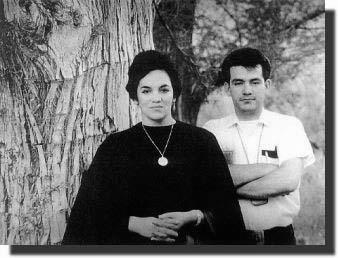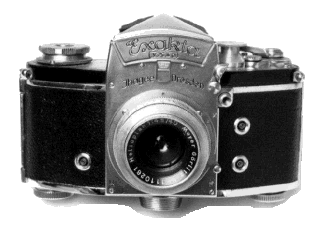Brief
Love Story
by
J. Ramón Palacios
tell
a friend about this article
|
35mm
SLR ...
The Rolleis from Franke &
Heidecke Fabrik Photographischer Prazisionsapparate were portentous
with their twin 75mm focal length lenses: the lower one actually
took the picture, the upper one allowed for viewing, focusing
and compose the image.
But the Germans also produced
the first single lens reflex in the world of 35mm, at Dresden:
the Exakta and her inexpensive little sister Exa of Ihagge (I.H.G.).
|
|
Exa
Ia - Ihagge - Dresden, Germany
.
|
Of course, my father had one of the
first (Exa Ia) and he let me use it. The names of the machined and
hand polished lenses -one at the time- of Carl Zeiss Jena are indelible:
Tessar, Biogon, Biotar, Plannar, Flektogon, Pancolar, as well as
the astounding images they produced.
As soon as the first pentaprism
appeared we installed it immediately. It was ecstasy.
| The use of contrasting
textures (the smoothness of a skin against the rugosity
of a tree cortex, for example) and composition, seemed natural
to me.
Without knowing it I had
learned it at home since childhood. From how my mother
arranged furniture, pictures and mirrors; her porcelain,
fine china and cut glass in the cabinets of the dinning
room; to the untiringly peering over the pages of the
German Photography Annuals, those of Life magazine and
many other specialized magazines and books my father continuously
gave me. |
 |
| We
traveled much and each visit to a city implied compulsory
sessions at the best coffee houses, colonial public buildings,
convents and museums, always a class of aesthetic appreciation,
amenable conversation fully loaded with anecdotes of its
founders, architects, painters, sculptors, government and
military rulers.
Several
years, thousands of feet of film and thousands of miles
later, at home appeared the Exakta.
|
 |
 |
Shutter speed had increased from
the top 1/150 of a second in the Exa to a 1/1000; the possibilities
for action pictures were now infinite.
|